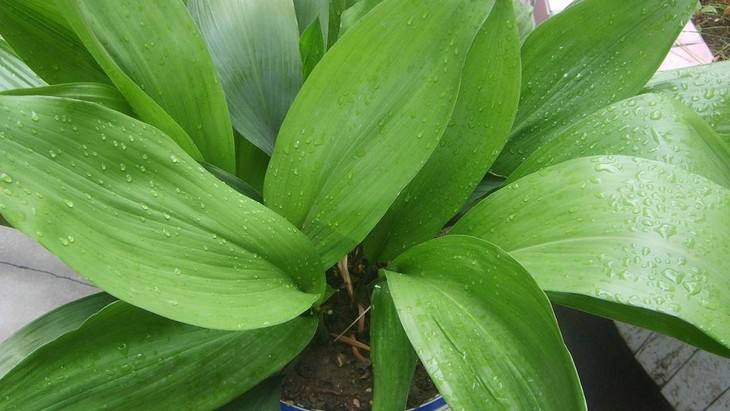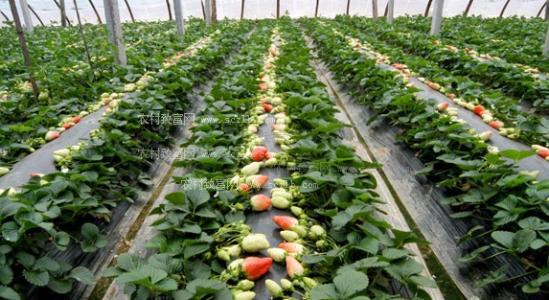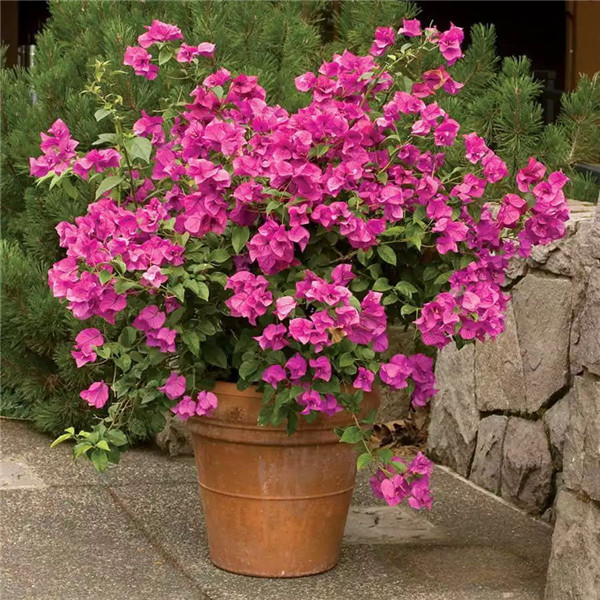Is the leaf orchid poisonous? where to keep it at home and what to do if the leaves turn yellow? why not grow new leaves?
The leaves of one-leaf orchid are green and beautiful, and many people like to use it to purify the air and decorate the house. although one-leaf orchid belongs to extensive management, it also needs us to take good care of it occasionally to avoid the yellowing of the leaves. I believe many people will have such a question: is the leaf orchid poisonous? The following editor will introduce to you the problems related to the poisonous orchid at home and the yellowing of the leaves.

Is the leaf orchid poisonous? One-leaf orchid is not poisonous. One leaf orchid is not only non-toxic, but also can purify the air. One-leaf orchid has a scavenging effect on formaldehyde, can effectively absorb carbon dioxide, hydrogen fluoride and other harmful gases, is a good indoor purification plant. Breeding one-leaf orchid indoors, can decorate the home, but also can purify the home, absorb the waste gas in the air, release the oxygen we need, and achieve a ventilation effect. Where can I keep a leaf orchid at home? Put it in the living room: isolate the foul smell of the toilet if the living room or dining room happens to be in front of or next to the toilet, you can put a leaf orchid between the living room and the toilet. First, absorb the bad luck of the toilet, play the role of purification. The second is to block the bad magnetic field. But it's still the same problem. The plants have to be changed in a few months and moved to a shady place for ventilation. Only in this way can we ensure the cleanliness of the plants and prevent the family from being affected by foul gas. Put it in the corner: isolate the trash can gas field if you put a garbage can near the sofa in your home, you can put a leaf orchid to isolate the bad gas field and play a purification role. It not only purifies the air, but also reminds you to keep the trash can clean. Put it in front of the corridor: block the corridor if your seat happens to be washed into the hallway, you can put a broad-leaf potted plant such as a leaf orchid to block part of the corridor. However, to control the height of a leaf orchid, when a person is sitting, you can block the line of sight in front of you. Put it next to the sofa: block electrical appliances if there are large appliances in front of or behind the sofa chair at home, you can also put a leaf orchid. To block the anger caused by electrical appliances, but do not keep the plant next to it, move it outside for 3 months to receive sunlight, otherwise often stay with electrical appliances, the plant will gradually wilt. Put it in the bedroom: never in general, a leaf orchid is not recommended to be placed in the bedroom. In addition to the bedroom can also be placed in a corner of the balcony, window, but do not block the southward light. Because the south-facing light and ventilation is particularly important, if the south-facing balcony can be placed next to, rather than blocking the window, try not to put the plant on the same line with the kitchen, which can easily lead to potted plants withered and yellow.
The causes and solutions of the yellowing of the leaves of one-leaf orchid: 1. When the light is too strong, the direct sunlight of one-leaf orchid bogey, short-term sunlight exposure may also cause leaf burns and yellowing, reducing the ornamental value. Solution: one-leaf orchid can be cultivated in bright indoor all the year round, but not in direct sunlight, either indoors or outdoors. 2. One-leaf orchid with too little light can be watched for months even in a dark room, but too dark for a long time is not conducive to the germination and growth of new leaves. If the light is too little in the dark for a long time, the leaves will turn yellow. Solution: if a leaf orchid is placed in a dark room, it is best to move it to a place with bright light for a period of time to facilitate growth and viewing, especially during the period from the germination of new leaves to the growth and maturity of new leaves. 3. Overwatering is also one of the reasons for the yellowing of the leaves of Cymbidium. Cymbidium likes water and has a certain degree of tolerance, even if it is dry for several days, it will not die, but if too much watering will affect root respiration and cause leaves to yellowing. Solution: one-leaf orchid watering should be dry and wet, not too much, but not too little. Sufficient water is needed during the growth period. 4. if the fertilizer is too thick, the demand for fertilizer is not very large, and it is best to apply light fertilizer each time. If too much fertilizer is applied, it will burn the root and destroy the growth of the orchid, and the leaves will turn yellow due to fertilizer damage. Solution: thin liquid fertilizer can be applied 1-2 times a month to promote the germination of new leaves and robust growth, to ensure that the leaves are beautiful and bright, not to fertilize too much. 5. Red spiders are easy to appear in orchids infected by insect pests in indoor maintenance, and the occurrence of insect pests is also the reason for the yellowing of leaves. Solution: always look at both sides of the leaves and spray dicofol, nisolan and other control in time. Will the orchid blossom? The orchid will blossom. In people's impression, the one-leaf orchid does not blossom, but it is not. It usually blossoms in April, with a short stem and a solitary flower at the top of the stem, which is borne on the rhizome exposed below the foliage, covered with lobes, purple-brown, dark spots on the outside, a pistil in the center and a large stigma covering the stamens. Fruiting after flowering, green spherical berries, shaped like spider eggs, are held by leaves, so a leaf orchid is also known as a spider egg. Why doesn't the orchid grow new leaves? The main reason for not sending new leaves is that the soil is hardened and the air permeability is poor. It is recommended to change the soil by adding 1/3 coarse sand or vermiculite. The growing season should be fully watered to keep the basin soil moist, and often spray water to the leaves to facilitate sprouting and growing new leaves, and the amount of water can be reduced appropriately after the end of autumn. A leaf orchid is extremely shady, and can be watched for months even in a dark room, but being too dark for a long time is not conducive to the germination and growth of new leaves, so if placed in a dark room, it is best to move it to a place with bright light for maintenance for a period of time, in order to facilitate growth and viewing, especially during the period from the germination of new leaves to the growth and maturity of new leaves.
Time: 2019-05-04 Click:
- Prev

Strawberry planting time a few months planting methods and techniques to plant strawberries need to pay attention to what
When it comes to strawberry cultivation, we need to fully understand the market situation of strawberries and the growth habits of strawberries. For example, what month is it better to plant strawberries? Now strawberries have good benefits in the market, which is also why more and more people want to rely on planting strawberries for development. In the process of planting strawberries,
- Next

What if the triangular plum loses its flowers and leaves? pay attention to these points so that we can easily solve them.
For triangular plum, it is a kind of plant and flower with high ornamental value, so many people like to raise some at home, but in our daily maintenance process, we always encounter some problems of one kind or another, and in the process of maintenance of many flower friends, we always encounter the situation of triangular plum losing its flowers and leaves.
Related
- Fuxing push coffee new agricultural production and marketing class: lack of small-scale processing plants
- Jujube rice field leisure farm deep ploughing Yilan for five years to create a space for organic food and play
- Nongyu Farm-A trial of organic papaya for brave women with advanced technology
- Four points for attention in the prevention and control of diseases and insect pests of edible fungi
- How to add nutrient solution to Edible Fungi
- Is there any good way to control edible fungus mites?
- Open Inoculation Technology of Edible Fungi
- Is there any clever way to use fertilizer for edible fungus in winter?
- What agents are used to kill the pathogens of edible fungi in the mushroom shed?
- Rapid drying of Edible Fungi

